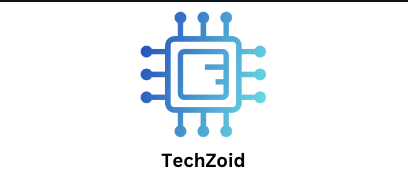Read more: Challenger Motor Freight reviews
Connected Infrastructure and Smart Mobility
The concept of clever mobility is the foundation of smart city transportation. This entails the utilization of Artificial Intelligence (AI), Internet of Things (IoT) sensors, and data-driven technologies to optimize traffic flow and manage transit networks. Cities are able to reduce congestion and enhance commute times by utilizing connected infrastructure, including adaptive signaling, real-time road monitoring systems, and smart traffic signals. For instance, cities such as Amsterdam and Singapore implement intelligent traffic management systems that modify signal timings in accordance with real-time traffic data. These systems facilitate real-time communication with public transportation and vehicles, thereby enhancing fuel efficiency and minimizing unnecessary idle.
Electric and autonomous vehicles
Urban mobility is being transformed by the transition to electric and autonomous vehicles. Electric vehicles (EVs) are at the forefront of the effort to reduce greenhouse gas emissions, providing an environmentally favorable alternative to traditional fuel-based transportation. Numerous smart cities are making substantial investments in electric vehicle infrastructure, which includes fast-charging stations that are powered by renewable energy. Conversely, autonomous or self-driving vehicles are introducing novel levels of convenience and safety.
Autonomous vehicles are capable of reducing human error, which is the primary cause of road accidents, by utilizing AI-based decision-making systems, cameras, and sensors. Additionally, encouraging carpooling and reducing the number of privately owned vehicles on the road could reduce traffic density through the use of shared autonomous transports and robo-taxis.
Integration of Public and Shared Transportation
The mobility network of any metropolis is fundamentally supported by public transportation. Innovation in smart cities is the result of the integration of various modes of transportation into a unified system. Users can access buses, railroads, motorcycles, and ride-sharing services from a single digital platform through the concept of Mobility-as-a-Service (MaaS). This integration enables commuters to seamlessly plan, book, and pay for multi-modal journeys using mobile applications. For instance, Helsinki’s “Whim” application enables residents to select from a variety of transportation alternatives that are tailored to their preferences, timing, and financial constraints. Not only do these systems offer convenience, but they also motivate individuals to abandon the ownership of private vehicles, thereby reducing pollution and congestion.
Green and Sustainable Transportation Initiatives
The transportation strategies of smart cities are indicative of their commitment to sustainability. Non-motorized transportation alternatives, including walking and cycling, are experiencing an increase in popularity. Numerous cities are constructing extensive networks of pedestrian-friendly pathways, green corridors, and bike-sharing systems. Additionally, the ecological footprint is further diminished by the implementation of renewable energy in public transportation, including solar-powered charging stations and electric buses.. Furthermore, urban planners are developing transit-oriented developments (TODs) that encourage sustainable commuting habits and reduce travel distances by increasing density in the vicinity of public transportation centers.
Urban Transportation Utilizing Artificial Intelligence and Data Analytics
The development of efficient transportation systems is significantly influenced by data. Cities can enhance transit scheduling, monitor air quality, and predict traffic trends by utilizing AI and big data analytics. Predictive analytics allows authorities to proactively deploy solutions and anticipate congestion before it occurs. Artificial intelligence algorithms also aid in the analysis of commuter behavior, which is instrumental in the development of more effective transportation policies and infrastructure. For example, automated alerts can be used to detect rule violations, monitor parking availability, and improve road safety using AI-based traffic cameras.
Conclusion
The foundation of smart city development is the implementation of innovative transportation solutions. Cities can establish systems that are environmentally responsible, efficient, and inclusive by integrating digital technology, sustainability, and human-centric design. The future of urban transportation is rooted in the adoption of electrified mobility, autonomous systems, integrated transport networks, and data-driven decision-making. These innovations will not only enhance the quality of life for urban citizens, but also promote economic development, reduce environmental impact, and increase mobility as cities continue to expand. In essence, the journey to a wiser city commences with the implementation of more intelligent transportation methods.
